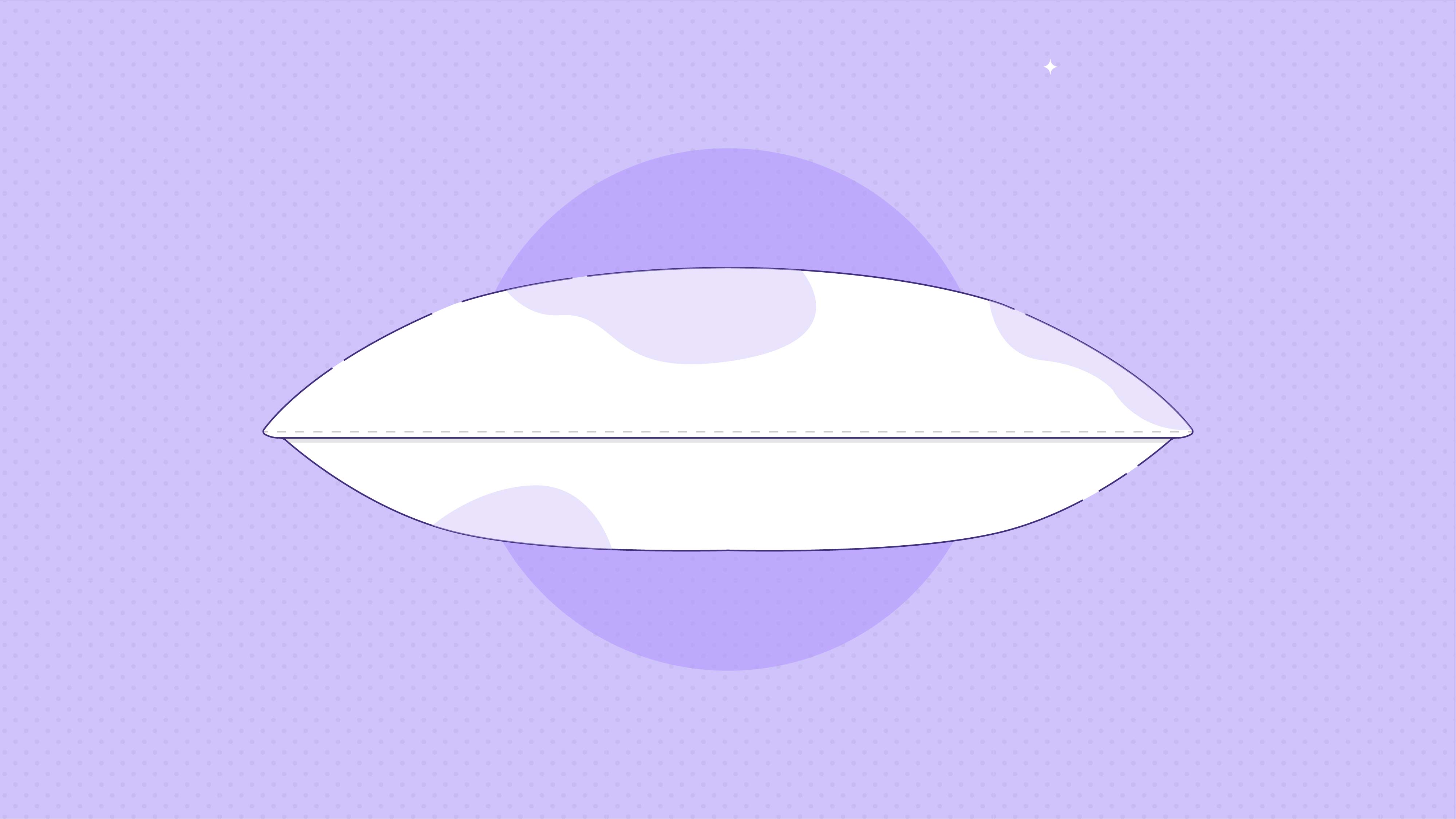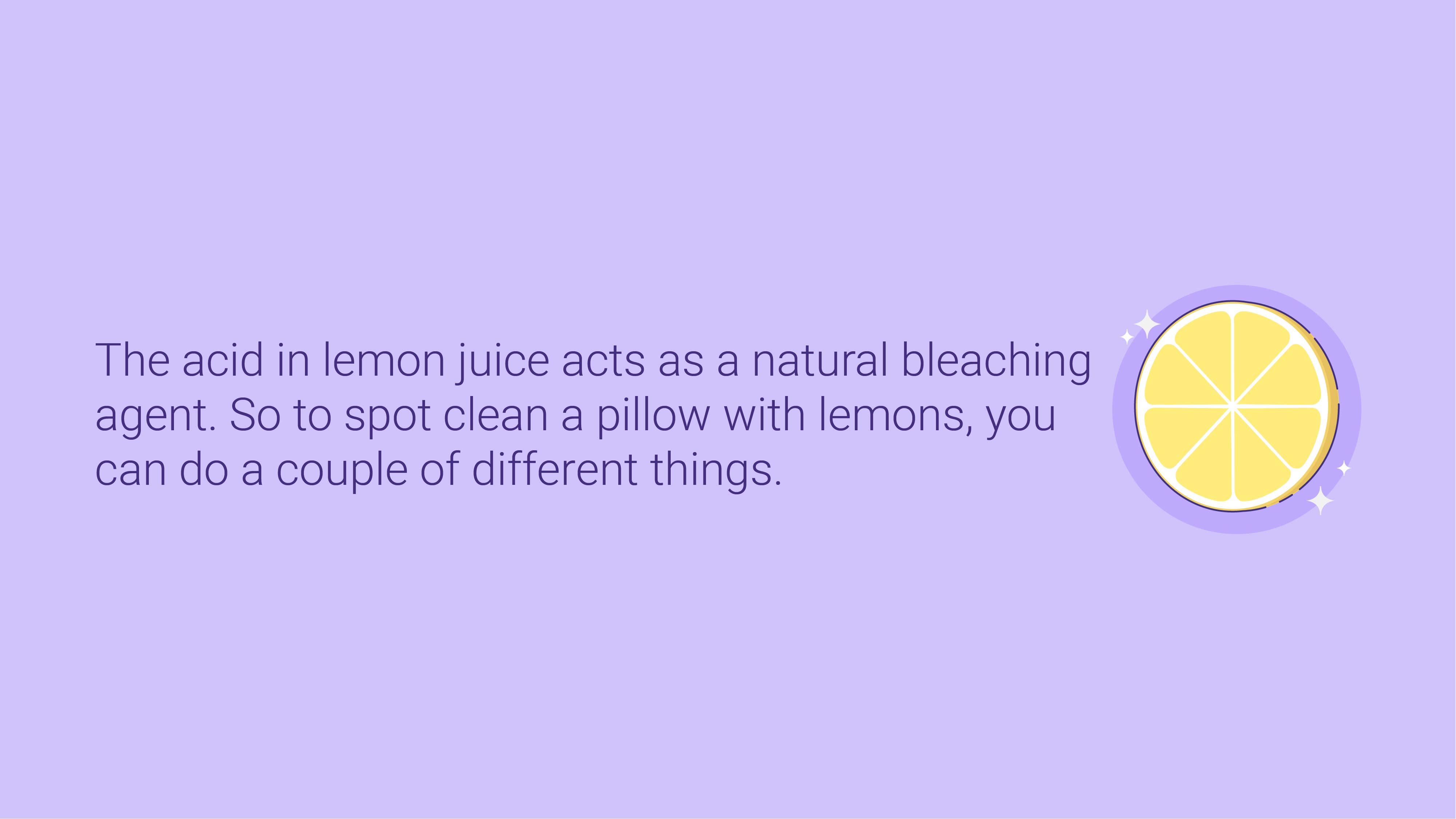
How to Spot Clean a Pillow

- Stains on pillows can be removed effectively through spot cleaning using natural stain removers like lemon juice, dish soap, white vinegar, or baking soda. Upholstery cleaners and vacuuming can also help eliminate resistant stains and dust.
- Know the pillow types that are washable, such as down, down alternative, and feather pillows, and those that are not, including memory foam, buckwheat, and wedge pillows. Care labels should be checked for specific washing instructions.
- Pillows that cannot be machine-washed may require spot cleaning techniques, and pillow protectors can help maintain cleanliness and protect pillows from dust, sweat, and oil.
Many pillows aren’t machine washable. Whether they’re feather or memory foam pillows, some pillows just can’t get wet. Yet you don’t want to head out to the dry cleaner every time you get a little dot of ink, food, or drink on your pillow’s fabric.
No need to trouble yourself with a trip—there’s spot cleaning. If you can learn how to spot clean your pillows, you can avoid staining them and wrecking them in the wash. So let’s talk about how.
Stain Removers

Tons of different natural stain removers can get the spots right out of your pillow cover. Just make sure you’re using them the right way, as misusing stain removers can cause the stain to set in or create a brand new stain.
One trick to remember is to try to angle your pillows so that you rinse only the cover without soaking the fill. Try angling the pillow downward, so the water runs off the cover and into the sink.
Lemon Juice
The acid in lemon juice acts as a natural bleaching agent. So to spot clean a pillow with lemons, you can do a couple of different things.
- Mix one part lemon juice to two parts warm water and gently dab the stain with a white towel or damp sponge until it comes out.
- Squeeze a lemon straight onto the stain and then pour salt on top. Blot the juice and salt, repeating until the stain is gone. Rinse with water.
Dish Soap
Grease stains are especially vulnerable to good grease-fighting dish soap. Squirt a little Dawn or other dish soap onto the stain and blot with a wet white cloth. You may need to leave the soap on the stain for a few hours before rinsing only the stain with as little water as possible to remove the soap.
White Vinegar and Baking Soda
Vinegar is another acid that can take the color out of even set-in stains. To get tough stains out:
- Saturate the stain in white vinegar.
- Rub the stain with a ½ vinegar ½ baking soda paste.
- Rinse all the paste off after the stain is lifted.
Upholstery Cleaners
Upholstery cleaners (some people call them furniture vacuums) can help get resistant stains out of your pillows.
Dry Vacuuming
If you want to get rid of dust or dry dirt, you could try to vacuum your pillow without using water. Vacuuming can lift brown or yellow marks left by dirt that hasn’t actually stained your pillows. Dry vacuuming can also help remove dust mites from your pillow’s surface.
Wet Vacuuming
Some upholstery vacuums come with a sprayer that can shoot hot water or even steam. Scrubbing the stains with hot water and upholstery shampoo that is immediately sucked back up into the vacuum can be great for pillows with fills that can’t get wet.
Just make sure to remove excess moisture and fluff your pillows after steam cleaning to ensure the drying process is complete. Also, look at your pillow’s care label to ensure it can handle the heat.
What Pillow Types Can I Wash?
With so many types of pillows to consider, you might want a cheat sheet of the ones you can and can’t wash.
If you want a pillow you can throw into the washer, try:
It can be a bit of a trick to wash feather pillows, though, and some are dry-clean only.
And when it comes to pillows you can’t wash, the list usually includes:
That said, some memory foam pillows are washable if they have a shredded fill. See our guide on cleaning memory foam pillows for more.
Naturally, you want to balance your other sleep needs with how much care you’ll need to invest in a pillow. For example, if it’s more important to have an organic pillow than a pillow you can wash, you might want to try a buckwheat pillow.
FAQs
Can I dry clean my pillow?
You’ll need to look at your pillow’s care instructions to see whether it can be dry cleaned. Most of the time, pillows that can’t get wet (like feather and foam pillows) can still be dry cleaned. However, the pillow’s care label may give directions on how to dry clean it or whether it can be dry cleaned at all.
Is my pillow machine washable?
Your care label should tell you whether you can toss a pillow in the washer or hand wash it. The label should also give you instructions on whether you should use the spin cycle or gentle cycle, hot or cold water, or regular or mild detergent.
If your pillow doesn’t have a label, there are some general rules. For example, suede and silk are not machine washable. Decorative pillows with beads or sequins also should not go in the washing machine. Some fillings like feathers and foam of any kind should also never get wet.
Will a pillow protector help keep my pillow clean?
Pillow protectors are a great way to help keep your pillows clean. Pillow protectors are different from pillowcases. Pillowcases are part of your sheet set, and they exist to keep you comfortable and make your pillows match your sheets. Pillowcases can protect your pillow a little, but they don’t zip shut and aren’t usually waterproof.
A pillow protector zips shut to keep your whole pillow protected from dust, sweat, and oil. Lots of pillow protectors are also waterproof. That means if you put a pillow protector underneath your pillowcase, you can keep your pillow free of dirt and moisture for a long time.
What’s the pillow material with the easiest maintenance?
If you don’t want to deal with spot cleaning or dry cleaning, some pillows can be machine washed. For example, cotton and fiberfill pillows can be tossed in the washing machine on the delicate cycle and dried on the low or no-heat setting. Down pillows can also be washed in the bathtub or a machine with no agitator, though you should always dry them either on the no-heat setting or by laying them out.
If you want machine-washable pillows, avoid feather pillows and foam pillows. Water can cause feathers to clump permanently. And foam soaks up water like a sponge, which can damage its structure and also cause it to develop mold or mildew.
Should I use cold or warm water to spot clean?
The water temperature you need to remove stains depends on the composition of the stain. Some stains respond better to cold water, and hot water may even set certain stains:
- Cold water works better for blood, certain foods, beverages, and water-based paint.
- Hot water is better for oily stains, and it also works for removing stains from synthetic fabrics.
The best rule for removing a stain is to start with cold water unless you know the origin of the stain and the composition of the stained fabric. If the cold water doesn’t work, then move on to the warm.
Bottom Line
Even if you can’t wash your pillows, you can still get stains out. All it takes is a little patience and a little delicacy, and your stained pillow covers can come out looking good as new!
